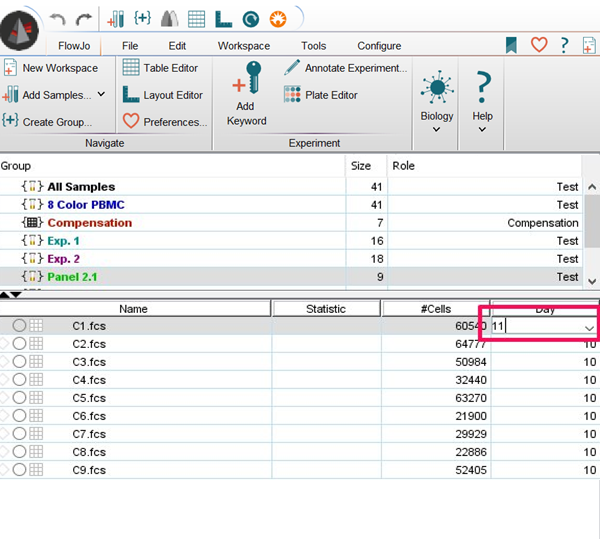

Therefore, any gate within a sample that has a group's color and style is guaranteed A gate that is attached to a sample through a group operation appears in the same color and style as that group. Whenever you add a sample to a group (by dragging it into the group), that group's analyses are automatically applied to theĪssociated with group names is a color and text style. If a sample belongs to multiple groups, then it will have all of the analyses from all of the groups to which it belongs.

Once you compensate the sample, however, the gates will (For example, if you have created a gate based on compensated parameters, and a sample that is not compensated is added to the group, then those gates cannot be added to that sample. Of course, if the group specifies analyses that are not applicable to the sample, then this doesn't There is one unbreakable rule with regards to groups: Every sample belonging to a group must contain every analysis that has been applied to the group. For hints on creating groups to efficiently use this feature, click This is one of the ways in which FlowJo performs batch analyses. Group, are then added to every sample belonging to the group. The only difference is that these gates, after being added to the In other words, you can drag gates or statistic nodes to a group exactly the same way as you would to another sample. If the current group is All Samples and you delete the sample, then you will be permanently removing the sample from the workspace.Ī group behaves in some ways as a "template sample" for its members. To remove a sample from a group, select the group, then select the sample and press the delete key. Just click on the sample and drag it to the group. You can add samples from the workspace to any group. These criteria should be checked anytime new samples are added to the workspace: if the new samples meet those criteria, they are added to the group (and group-based analyses are automatically performed at once.) When you create the group, you are given the option of adding samples to the group which fit a set of criteria-this is specified by the Group Definition dialog window. (2) You can create a new group by clicking on the New (1) When you read in a folder of data files, FlowJo creates a group with the name of the folder and automatically adds the samples to the group or The "All Samples" group can neither be renamed nor deleted. It contains (by definition) all of the samples known to the workspace. There is a special case group: the "All Samples" group. The groups in the upper portion of the workspace window. Any given sample may belong to one or more groups.

A group is a collection of samples-and a mechanism by which analyses can be applied uniformly to that collection of samples. Groups are the heart of all the powerful tools in FlowJo.


 0 kommentar(er)
0 kommentar(er)
